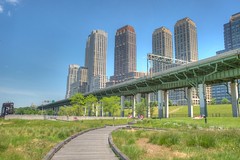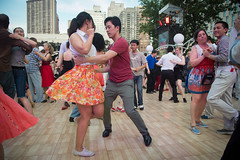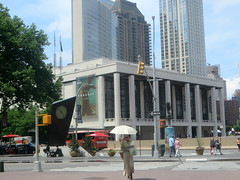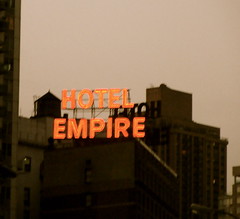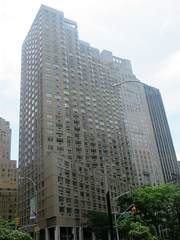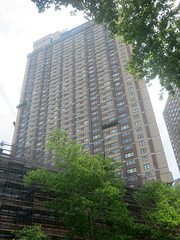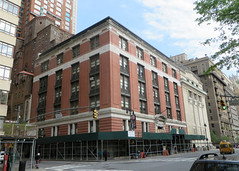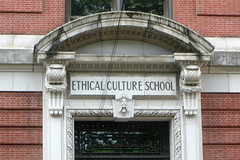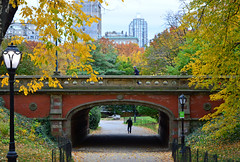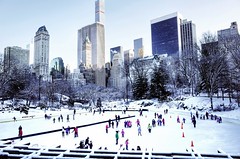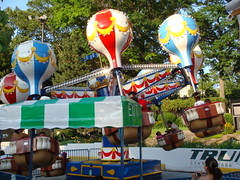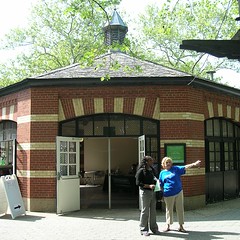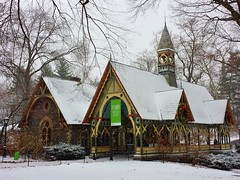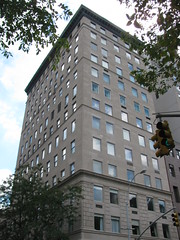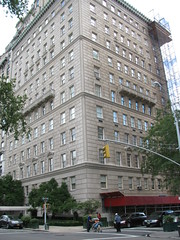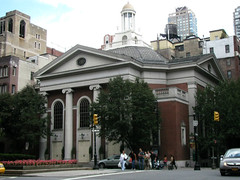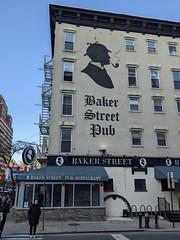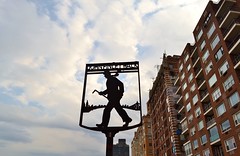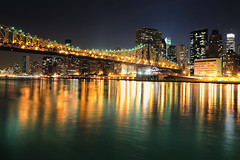Inscope Arch
 A pink-and-grey granite arch connects the Zoo and the Pond. Not part of the original park plan, it was added in 1873 to keep pedestrians from getting in the way of carriage traffic.
A pink-and-grey granite arch connects the Zoo and the Pond. Not part of the original park plan, it was added in 1873 to keep pedestrians from getting in the way of carriage traffic.
The arch appears in Home Alone 2—but it's a set, not shot on location.
Wien Walk
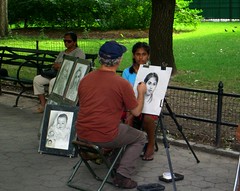 On the walkway that leads to Freedman Plaza, you will find many sketch artists and a few puppeteers or balloon animal makers. There used to be more masseuses.
On the walkway that leads to Freedman Plaza, you will find many sketch artists and a few puppeteers or balloon animal makers. There used to be more masseuses.
It's named for Lawrence Wien, a real estate lawyer who once owned the Empire State Building and the Plaza Hotel. He gave millions of dollars to Central Park and other nonprofit causes, particularly Columbia University.
|
|

The zoo dates back to the earliest days of the park, when people used to donate miscellaneous animals which were displayed near the Mall. It was chartered by the New York Assembly in 1864, making it the second-oldest public zoo in the country (after Philadelphia's), and the oldest zoo in New York.
In 1865, around the time it acquired a trio of Cape buffalo General William Sherman had picked up during his march through Georgia, the menagerie was moved to the Arsenal. Against the opposition of Central Park architects Olmsted and Vaux, permanent enclosures were built on the site of the present Zoo in 1870.
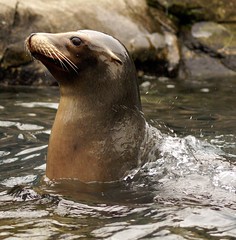
In 1934, new enclosures for the animals were designed by Aymar Embury, who designed hundreds of projects for Robert Moses. Some of his neo-Georgian brick and limestone buildings, arranged in a quadrangle around the sea lion tank, still remain, but the depressing menagerie-style cages were eliminated in a 1988 redesign by Kevin Roche, Dinkeloo, after the New York Zoological Society took over the facility.

The zoo's best-known resident was Gus the polar bear, whose psychological issues stemming from captivity, and his keepers' efforts to treat his neuroses, made him his species' most famous individual--the subject of books, a play, even a song by The Tragically Hip. He died in 2013, at the advanced age of 27, one of very few bears to
get a New York Times obituary. His enclosure now holds grizzly bears, who seem to fare better in captivity.

Other zoo notables include Roy and Silo, a same-sex chinstrap penguin couple. (They have since broken up.) Also on view are sea lions, snow monkeys, red panda and dozens of species in an indoor rainforest. Since 2009, the zoo has been home to three rare snow leopards.
A perfect symbol of wildness captured by civilization, the zoo features in such films as Madagascar, The Day
After Tomorrow, Jack Nicholson's Wolf
and Woody Allen's Alice; books like Mr. Popper's Penguins and Catcher in the Rye; and the Simon & Garfunkel song "At the Zoo."

One of only two buildings in Central Park that are older
than the park itself, The Arsenal was, as its name suggests,
originally used to store arms for the New York State National Guard. It replaced a former repository located in what's now
Madison Square Park; it was constructed between 1847 and 1851 in a project overseen by state comptroller Millard Fillmore, who later became president. It was designed by architect Martin E. Thompson to look like a medieval fortress, with a crenulated cornice.
In 1857, it was bought by the city and turned into an administrative office and police station for the nascent park.
In 1859, it began to accumulate a collection of animals donated by notables like PT Barnum, Gen. William Tecumseh Sherman and August Belmont—a menagerie that was evicted in 1871 as unsafe and smelly.
From 1869 to 1877, it was a temporary home for the American Museum of Natural History, as well as a dinosaur reconstruction studio. It also served as an art gallery and the site of Central Park's weather station, relocated to Belvedere Castle in 1918.
|
 It was called the Muhhekunnetuk by the Mahicans, meaning the River
That Flows Both Ways—a reference to its formal status as an
estuary or fjord, a glacier-carved branch of the sea with salt water
as high as Newburgh and tides all the way up to Troy. Originally
known by the Dutch as the North River—as opposed to the South River,
now called the Delaware—its current name honors Henry Hudson,
the English explorer who sailed up it in 1609. He's also the namesake
of Hudson Bay, where mutinous crewmen left him to his presumed death in 1611.
It was called the Muhhekunnetuk by the Mahicans, meaning the River
That Flows Both Ways—a reference to its formal status as an
estuary or fjord, a glacier-carved branch of the sea with salt water
as high as Newburgh and tides all the way up to Troy. Originally
known by the Dutch as the North River—as opposed to the South River,
now called the Delaware—its current name honors Henry Hudson,
the English explorer who sailed up it in 1609. He's also the namesake
of Hudson Bay, where mutinous crewmen left him to his presumed death in 1611.
